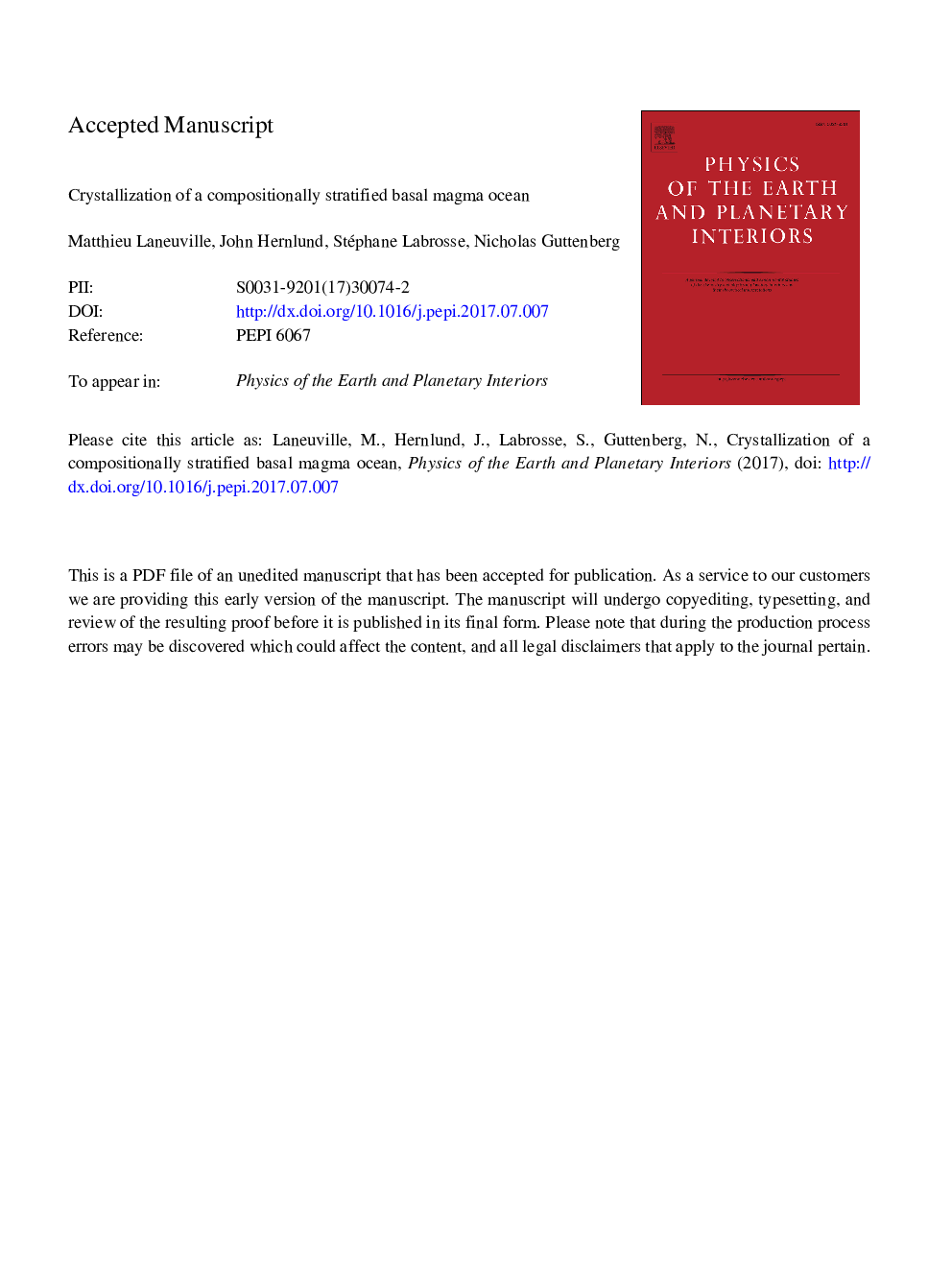| Article ID | Journal | Published Year | Pages | File Type |
|---|---|---|---|---|
| 8915723 | Physics of the Earth and Planetary Interiors | 2018 | 30 Pages |
Abstract
Earth's â¼3.45 billion year old magnetic field is regenerated by dynamo action in its convecting liquid metal outer core. However, convection induces an isentropic thermal gradient which, coupled with a high core thermal conductivity, results in rapid conducted heat loss. In the absence of implausibly high radioactivity or alternate sources of motion to drive the geodynamo, the Earth's early core had to be significantly hotter than the melting point of the lower mantle. While the existence of a dense convecting basal magma ocean (BMO) has been proposed to account for high early core temperatures, the requisite physical and chemical properties for a BMO remain controversial. Here we relax the assumption of a well-mixed convecting BMO and instead consider a BMO that is initially gravitationally stratified owing to processes such as mixing between metals and silicates at high temperatures in the core-mantle boundary region during Earth's accretion. Using coupled models of crystallization and heat transfer through a stratified BMO, we show that very high temperatures could have been trapped inside the early core, sequestering enough heat energy to run an ancient geodynamo on cooling power alone.
Keywords
Related Topics
Physical Sciences and Engineering
Earth and Planetary Sciences
Geophysics
Authors
Matthieu Laneuville, John Hernlund, Stéphane Labrosse, Nicholas Guttenberg,
